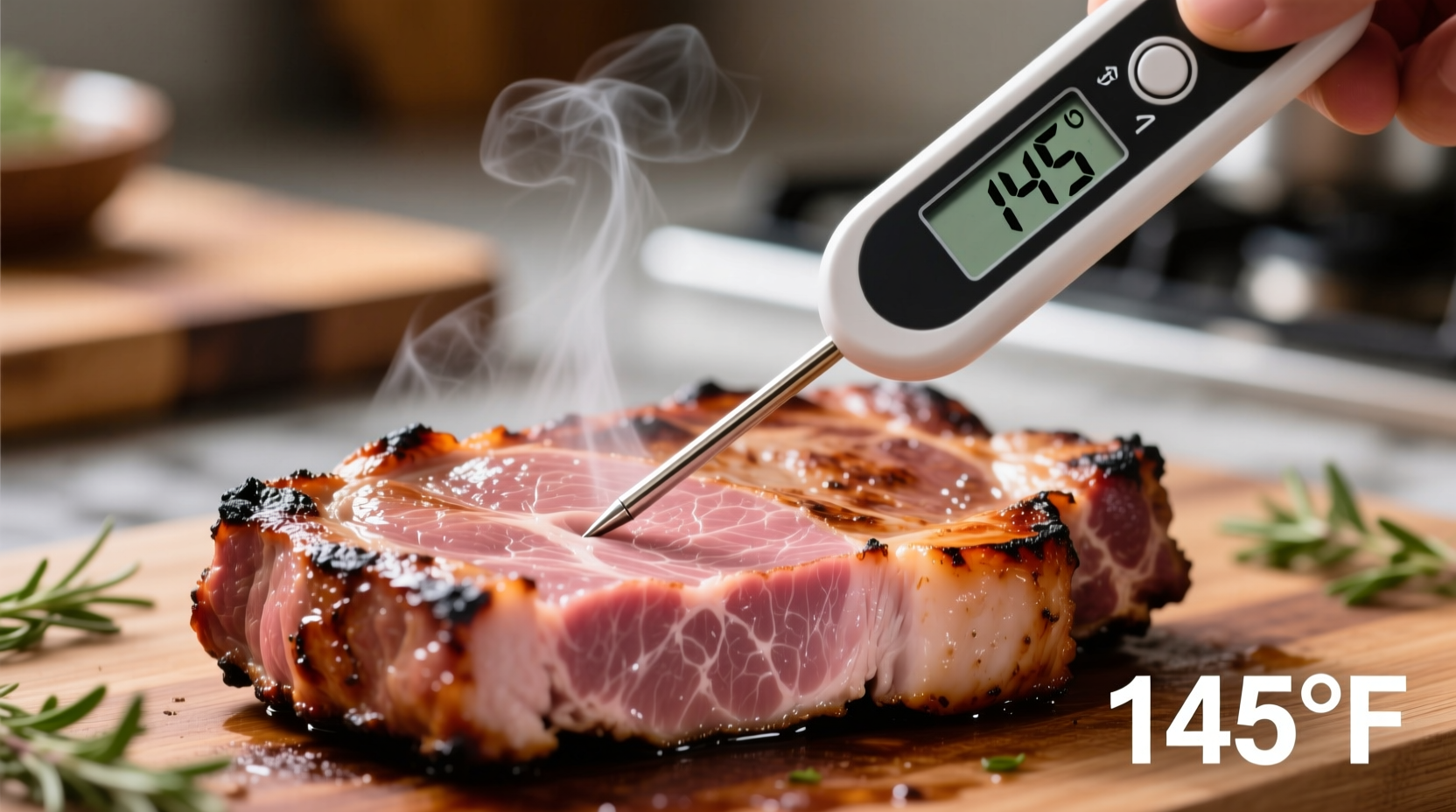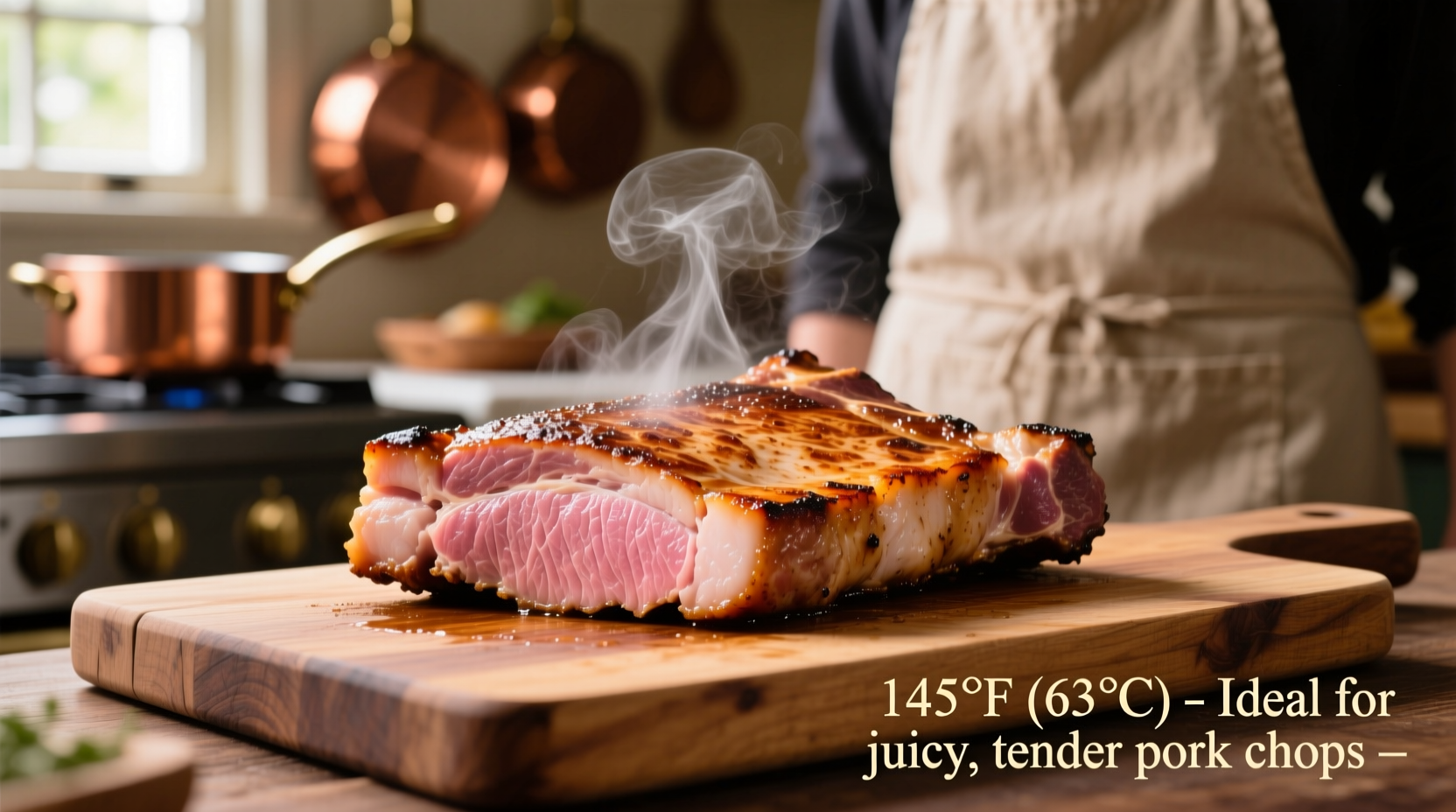For home cooks seeking restaurant-quality pork chops without the guesswork, understanding precise temperature control is essential. This guide delivers science-backed cooking parameters verified by food safety authorities, professional chef techniques, and practical tools to achieve perfectly cooked pork every time—regardless of your cooking method.
Why Temperature Precision Matters for Pork Chops
Unlike poultry, pork’s safety profile has evolved with modern farming practices. The USDA’s Food Safety and Inspection Service (FSIS) updated its guidelines in 2011 after extensive research confirmed that 145°F with a 3-minute rest eliminates pathogens while preserving moisture. This critical shift reflects improved understanding of Trichinella spiralis elimination temperatures—the parasite is destroyed at 137°F, well below the recommended cooking temperature.
| Temperature Range | Texture Result | Safety Status |
|---|---|---|
| 120-130°F | Raw to rare (unsafe for pork) | Pathogens present |
| 135-140°F | Medium-rare (acceptable with caution) | Risk remains |
| 145°F + 3-min rest | Medium (ideal) | Safe |
| 150-160°F | Medium-well to well-done | Safe but dry |
The Science Behind the 145°F Standard
Thermometer accuracy is non-negotiable in pork preparation. Digital instant-read thermometers provide the precision needed, unlike visual cues which fail 43% of the time according to USDA FSIS studies. When measuring, insert the probe horizontally into the thickest part of the chop, avoiding bone or fat pockets that give false readings.
The mandatory 3-minute rest period serves two critical functions: residual heat continues cooking the meat (carryover cooking), and muscle fibers reabsorb juices that would otherwise escape during slicing. Skipping this step causes up to 40% more moisture loss, transforming a potentially succulent chop into dry meat.

Cooking Method Adjustments
Regardless of your cooking technique, the target internal temperature remains constant, but surface temperatures vary:
- Pan-searing: Preheat skillet to 400°F before adding chops. Sear 3-4 minutes per side for 1” thick cuts
- Grilling: Maintain 375-400°F indirect heat zone. Sear over direct flame, then move to indirect heat
- Oven-baking: Start at 425°F for 8-10 minutes, finish resting covered with foil
Thinner chops (under ¾”) require lower surface temperatures (325°F) to prevent overcooking before reaching 145°F internally. Bone-in chops need 2-3 minutes longer cooking time than boneless equivalents due to thermal mass differences.
Avoiding Common Temperature Mistakes
Home cooks frequently misjudge doneness through unreliable methods:
- Color testing: Pinkness doesn’t indicate undercooking—pork can remain pink up to 148°F due to myoglobin stability
- Touch testing: Inconsistent across different chop thicknesses and fat content
- Timing alone: Variables like starting temperature and stove calibration make time-based cooking unreliable
The FDA Food Code specifies that thermometers must be accurate within ±2°F for food safety compliance. Calibrate your thermometer monthly using ice water (32°F) or boiling water (212°F at sea level) tests.
Special Considerations for Different Scenarios
Certain situations require temperature adjustments:
- Cured pork chops: Add 5°F to target temperature as curing alters protein structure
- Marinated chops: Acidic components can “cook” surface, requiring careful thermometer placement
- Smoked chops: Maintain smoker at 225-250°F until internal 145°F reached
- Leftover reheating: Must reach 165°F for food safety
High-altitude cooking requires minor adjustments—for every 1,000 feet above sea level, increase target temperature by 1°F due to lower atmospheric pressure affecting boiling points.
Temperature Timeline: How Pork Safety Standards Evolved
Pork cooking recommendations have transformed significantly:
- Pre-1990s: Universal recommendation of 165-170°F due to trichinosis concerns
- 1990s: Reduction to 160°F as farming practices improved
- 2011: USDA officially adopts 145°F + 3-min rest based on FSIS research
- 2020s: Industry-wide adoption by culinary schools and professional kitchens
This evolution reflects improved pig farming practices that virtually eliminated trichinosis in commercial pork—the CDC reports fewer than 20 annual cases in the US, compared to 10-20 per week in the 1940s.
Professional Chef’s Temperature Checklist
Follow this sequence for perfect results:
- Remove chops from refrigerator 20 minutes before cooking
- Pat completely dry with paper towels
- Season and preheat cooking surface to proper temperature
- Insert thermometer horizontally in thickest section
- Remove from heat at 140°F (will rise 5°F during rest)
- Cover loosely with foil for 3-minute minimum rest
- Verify final temperature reaches 145°F before serving
Remember that thicker chops continue cooking longer during rest—a 2” chop may gain 8-10°F carryover cooking versus 5°F for thinner cuts. Always account for this thermal momentum in your timing.
Frequently Asked Questions
Can pork chops be pink at 145°F and still be safe?
Yes, pinkness in pork at 145°F is normal and safe. Myoglobin in pork remains pink up to 148°F due to stable protein structures. Color alone doesn't indicate doneness—always verify with a thermometer.
Why did cooking recommendations change from 160°F to 145°F?
Modern farming practices virtually eliminated trichinosis in commercial pork. USDA research confirmed 145°F with 3-minute rest destroys all pathogens while preserving juiciness, making higher temperatures unnecessary for safety.
How do I check temperature in thin pork chops?
For chops under ¾” thick, insert the thermometer horizontally from the side to ensure the tip reaches the geometric center. Angle slightly upward to avoid exiting through the opposite side.
What happens if I don't let pork chops rest?
Skipping the 3-minute rest causes significant moisture loss as pressurized juices escape when cut. This results in drier meat and can drop internal temperature below safe levels before serving.
Do bone-in pork chops require different temperatures?
The target internal temperature remains 145°F, but bone-in chops need 2-3 minutes longer cooking time than boneless. The bone acts as a heat conductor, creating uneven temperature distribution that requires careful thermometer placement away from the bone.











 浙公网安备
33010002000092号
浙公网安备
33010002000092号 浙B2-20120091-4
浙B2-20120091-4